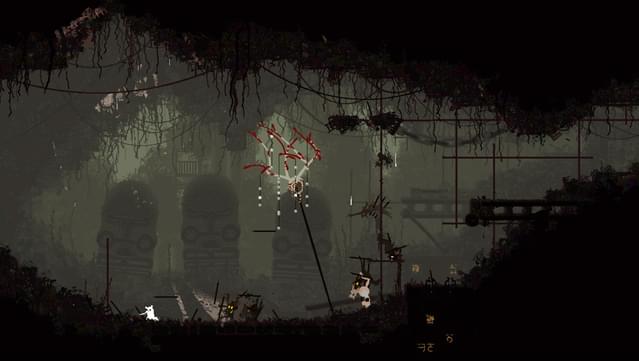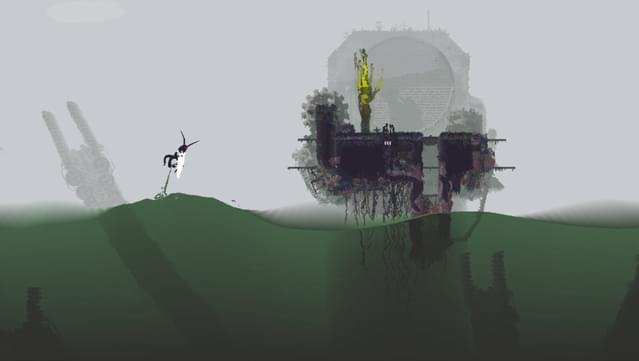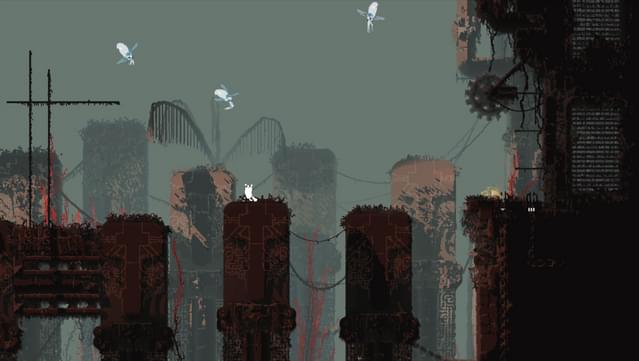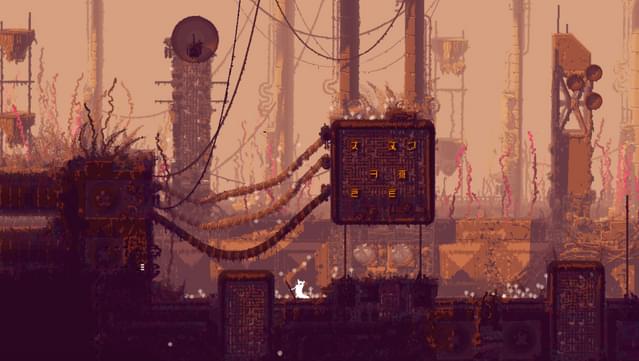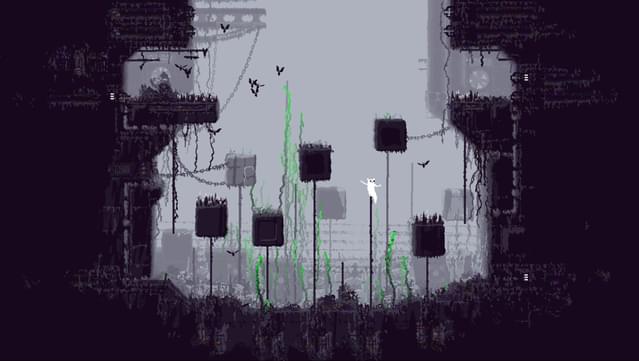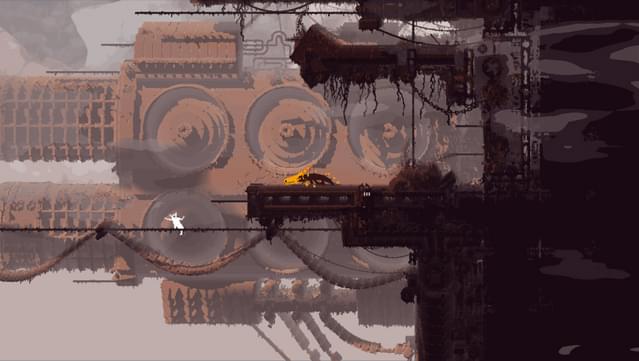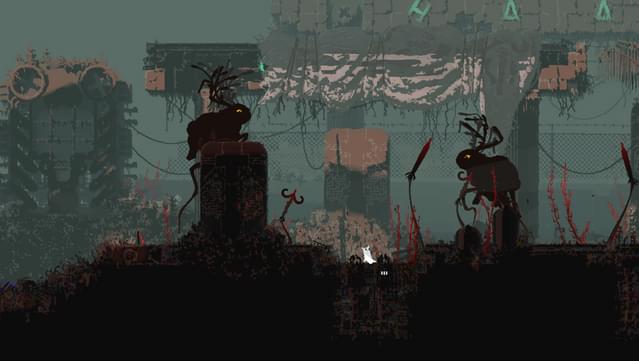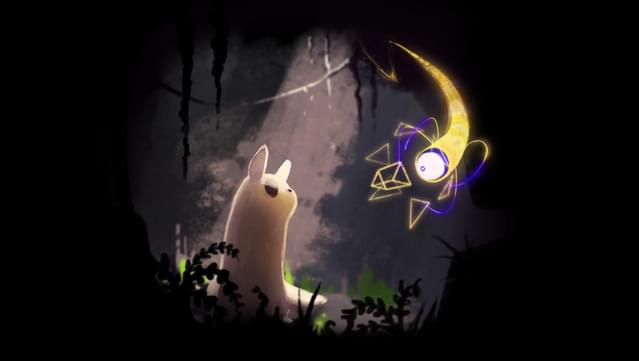Posted on: March 28, 2017

Fortuk
Verified ownerGames: Reviews: 10
Survival of the fittest and slugcats
Rain World is a game about being a cute little slugcat trying to survive in a Darwinian nightmare. It’s gorgeous, harsh and very good. I've seen a lot of comparisons made between it and Dark Souls, but Abe's Oddysee, The Void and (oddly enough) Creatures feel like better comparisons. The clearest difference here is that Dark Souls provides you with a world that can be learned and mastered. Enemies have patterns, tells and a fixed position or route, so once you know what you're doing you can elegantly blow through a section. It’s a game where enemies are essentially reactive and where learning what makes an enemy tick equals beating them. In contrast to that, in Rain World other creatures are doing their own thing; scouting around, defending their territory, hunting smaller things, staying away from bigger things, hiding from the rain, and so forth. Instead of figuring out the zone itself or the most optimal way to get around, you’re figuring out how to manoeuvre through this ecosystem and how to respond to changing circumstances. This is why going into the game having been told that it’s like Dark Souls will lead to frustration, as a corridor that you want to pass through turning out to be filled with alien croco-lizards will feel like the game is cheating you out of your progress. If you instead take it as nature running its course within the logic of the game and that this happened to get in your way, you’ll see how you can just come back later and avoid the whole situation .... or you might get gutsy and use what you’ve learned about these critters so far to lure them away or get around them. This is where the game its implementation of an ecosystem shines and makes it feel like your little abomination is a small part of a much bigger, internally consistent world This approach is also reflected in the controls, which are responsive but physics based and thus take some getting used to. The weight that this adds to the slugcat’s movement wouldn’t be appropriate for a platformer like Super Meat Boy, where the goal is learning to beat the level as fast as possible and levels are designed around sharp air-control, but here it works as the game does not rely on pin-point accurate jumping and instead involve rough and tumble clambering and bouncing over obstacles. The game also only explains the basic controls to you and expects you to figure out the rest, which makes for some great ‘eureka’ moments but can also be frustrating for those that get stuck. Similarly, you start the game feeling limited due to your lack of strong movement options but this changes as you learn how make the most of your abilities. This is why it’s a good idea to start your playthrough by messing around with the controls, once you’ve found your first checkpoint. On a side note: the game comes with both keyboard controller support (with key rebinding for both) and, which both worked fine for me. To finish, Rain World is a harsh game but not as hard as it might sound, precisely because this isn’t a super-hardcore platformer that requires total memorisation of the levels and great reflexes. This means that whether or not you like really hard games isn’t a reliable indicator of whether or not you will like Rain World. It is really a game that does its own thing and which you should try for yourself so that you can see if you can get into its mood. If, however, you’re put off by some of the rough edges and the lack of an in-depth tutorial, then you should wait a bit for some of the patches to come along as the game is likely to get more narratively oriented options for those that would like those, while still keeping the exploratory experience for those that don’t, plus tweaks based on user feedback. Either way, I would recommend at least keeping an eye on it and giving it a genuine try at some point in time, as this game is too different and special to be ignored entirely.
Is this helpful to you?


